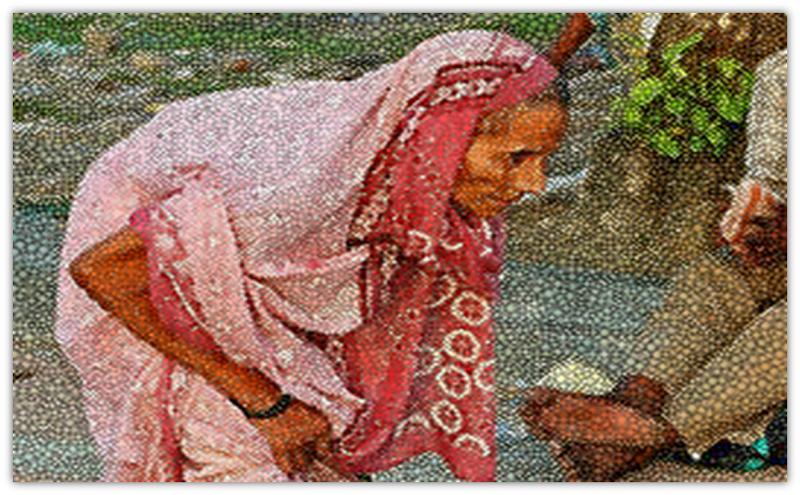The Woman With The Bent Back
The Woman With The Bent Back
Read Luke 13:10-17

What a blessing it is to have a day of rest! After creating all things by the Word of His power, God sanctified the seventh day so that His creation would rest in worshipping Him (Gen. 2:3). God affirmed the institution of the Sabbath at Sinai when He wrote with His own finger these words: “Remember the Sabbath day to keep it holy” (Ex. 20:8).
On the Sabbath, now the first day of the week, we are to set aside our daily labors and devote ourselves to the worship of God in public, in private, and in our families. This should not be a day chiefly of rules and regulations; that is how the Pharisees corrupted the Sabbath. Christ used the Sabbath to worship God in His appointed means and to do many works of mercy so that people would rest in Him, His mercy, and His finished work. Among other things, this is what He was teaching in His miracle involving the woman with the bent back.
The Infirm Woman⤒🔗
In the time leading up to our text, Christ had begun to go to Jerusalem (Luke 9:51) and was travelling one last time through Perea on the other side of the Jordan. In our text passage, He was in a synagogue for the last recorded time during His earthly ministry.
Luke suddenly introduces us to one of the congregants that day in the Sabbath. “And behold, there was a woman, which had a spirit of infirmity eighteen years, and was bowed together” (v. 11). In the surrounding verses, we are told three things about her condition.
First of all, her frame was completely pulled together. Her back was bent, not slightly, but as the original says, bent together, or completely bent over. She had been this way for eighteen years. She couldn’t look up into the sky or into people’s faces. She was probably teased and mocked by children around her as she made her difficult way through life.
The spiritual parallel becomes clear when we see, secondly, how this woman had been bound by Satan. In verse 16, Christ tells us that Satan bound this woman eighteen years ago. She had a “spirit of infirmity” (v. 11). Luke, a medical doctor, specifically mentions this. In other words, she did not merely have what today is known as a severe case of kyphosis, a documented medical condition. This was both a medical and spiritual problem. The devil had bound her so that she shuffled around every day as if chained by him.
Thirdly, this woman was in a situation where she could do nothing to straighten herself. Verse 11 reiterates this: “and could in no wise lift up herself.” How amazing then that we meet this woman in the synagogue. She puts to shame anyone looking for an easy excuse to stay away from church. Despite her pain and the shame she could have felt, her feet shuffled down the cobbled streets of this town until she was present to hear the Word of God read and explained. This particular time, Christ was the preacher, anointed from heaven “to preach liberty to the captives, and the opening of the prison to them that are bound” (Isa. 61:1-3).
The Restoring Physician←⤒🔗
This woman with the bent back could probably not have seen the preacher that day, but He saw her. In fact, Luke tells us that this Physician did three things to this patient.

First, He looked at her. “Jesus saw her...” (v. 12). This emphasizes the one-sided work of God’s grace. Many others came to Jesus asking for healing; this woman may also have prayed to the Lord many times for healing. But here, the Lord Jesus saw her in a way that no one can see. He saw her as the Lord saw His people buckled down in bondage in Egypt when He told Moses, “I have surely seen the affliction of my people” (Ex. 3:7). His was not a casual look, but a compassionate look.
Second, He called her to Him (v. 12). She likely couldn’t see Christ, but, shuffling, she followed His voice until she came to Him. Christ’s call was powerful and effectual in her life. “My sheep hear my voice” (John 10:27). With her in His presence, He issues the call of liberty from bondage: “Woman, thou art loosed from thine infirmity” (v. 12). Notice how there is no uncertainty in His words or demeanor. He doesn’t even command; he simply states the fact, but what a transformation lies contained in it!
Third, He touched her. “And he laid his hands on her” (v. 13). Under His touch, the spirit of infirmity left, the devil gave way, and this woman was no longer crushed, but stood upright. Now she could look up at the sun and into people’s faces! And she could see her great Physician’s face. This synagogue had never seen the likes of such a miracle. Christ’s words were effectual for a complete cure for the woman.
The Lord is pleased to do this same spiritual miracle in every sinner’s life whom He saves. When sinners are burdened with sin and its guilt, and under the curse of the law, God does what He said to Israel in Leviticus 26:13: “I have broken the bands of your yoke, and made you go upright.” This spiritual freedom is possible only because Christ would soon be bound and delivered up to be crucified. Because He was bound, His people can go free (John 18:8-12).
Have you experienced the freedom of your spiritual chains falling off? Has the burden of your sin and transgression rolled away because of the look, word, and touch of Christ through the Spirit? If it has, you will do the same thing this woman did, namely, glorify God (v. 13). We can’t claim to be changed by Christ if our lives are not fundamentally oriented to the praise and glory of a gracious God. The Lord Himself said, “This people have I formed for myself; they shall shew forth my praise” (Isa. 43:21).
The Instructing Lord←⤒🔗
The narrative doesn’t end with the healing of the woman. As the woman was glorifying God, something sinister took place. “And the ruler of the synagogue answered with indignation, because that Jesus had healed on the Sabbath day, and said unto the people, There are six days in which men ought to work: in them therefore come and be healed, and not on the Sabbath day.” Clearly, the glory of God was not on the mind of this ruler of the synagogue. Thinking himself wiser than the Lord of the Sabbath (see Matt. 12:8), he accused the great Physician of breaking the Sabbath.
Why does this man react so vehemently to this healing? Because every time the devil is forced to relinquish some of his prey, he tries to strike back. But there is more going on here. What makes this man so indignant? He seemed to have had far less of a problem watching this woman suffer than seeing her healed. What kind of spirit would respond like this? His remark is proof that his own spirit was even more in bondage than this woman’s had been. This man was probably a Pharisee, and his legalistic mind was evidently more interested in heaping burdens on people than in seeing them freed by the mercy of Christ.
Christ explicitly points out the man’s basic problem: religious hypocrisy (v. 15). He had never come to see the weight of guilt he was under. What a call to repentance for this man! Christ was being merciful in confronting him. He could have wiped him off the face of the earth forever for coming against Him, the Lord of glory. We can only hope that this rebuke was blessed to the man’s heart. That’s what we all need so desperately – for our masks to be taken off and for our sin to be exposed. Only then do we really become sinners before God.

Christ, however, also explains how inconsistent this man was. He reminds the man that even the Pharisees would make sure their animals were given water on the Sabbath. They would pull one of their sheep out of a pit into which it had fallen on the Sabbath (Matt. 12). Thus, says Christ, “ought not this woman, being a daughter of Abraham, whom Satan hath bound, lo, these eighteen years, be loosed from this bond on the Sabbath day?” In other words: If the needs of animals are met, shouldn’t the needs of this woman have been met?
Before we condemn this leader of the synagogue, let’s examine our own hearts. Do we have real love and concern for those carrying impossible burdens? Are we concerned with those in our “synagogues” (churches) who are bearing heavy loads? Paul instructs us to bear one another’s burdens and so fulfill the law of Christ (Gal. 6:2). This ruler of the synagogue didn’t seem to care much for this woman, or he would have rejoiced with her and glorified God with her when he saw her burden lifted.
Thus our passage draws a deep contrast. Christ raises up those who like this woman are bowed down in anguish (see Ps. 146:7). On the other hand, those who proudly resist the Lord like this ruler of the synagogue are turned upside down (see Ps. 146:8). It’s only when we rest in His mercy that we begin to enjoy a true Sabbath.
Questions←⤒🔗
- Christ seemed intentionally to pick the Sabbath for many of His miracles (e.g., Matt. 12:10; Mark 1:21-28; John 5:9; John 9:14). What can we learn from Jesus about how to use the Sabbath?
- It is not unusual for people to come to a house of worship burdened – perhaps not physically, but emotionally or spiritually. What are some of the burdens that people can carry with them into the house of God?
- In what way does this woman’s physical condition picture the spiritual problem of a fallen sinner? Consult Psalm 38:1-6.
| - Compare and contrast the woman and the ruler of the synagogue. How could it have been so much easier for the ruler to endure the woman’s suffering for eighteen years than her healing?
- Christ implies that this man had more concern for his animals than for this woman. What are some ways you could show concern for burdened people around you more than perhaps your possessions?

Add new comment